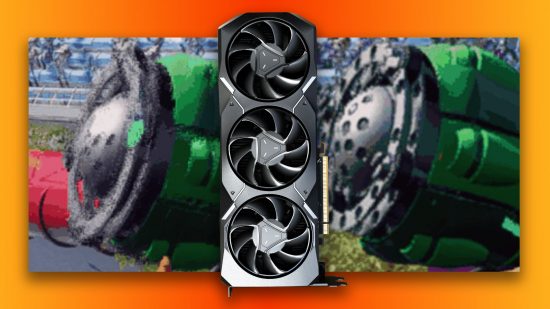AMD has just given its FidelityFX Super Resolution (FSR) upscaling technology a big update, and it looks massively better than its predecessors, with the company acknowledging that the image quality of FSR previously wasn’t up to scratch compared to Nvidia DLSS. Not only that, but this new AMD FSR 3.1 update also throws a bone to users of Intel and Nvidia GPUs.
AMD’s FSR tech is unique in that it’s supported by all the best graphics card options made by both AMD and Nvidia. It started as a basic resolution upscaling tool to improve frame rates, and has since expanded to cover frame generation. However, Nvidia’s DLSS tech, which only runs on GeForce GPUs, and takes advantage of their Tensor cores, has always looked much better in action than FSR, and that’s now set to change.
AMD promises that FSR 3.1 will offer “improved temporal stability at rest and in movement,” with “less flickering and/or shimmering and ‘Fizziness’ around objects in motion.” This is a big deal, as the shimmering is a real distraction when using FSR, acting a bit like a Moiré effect. Just as important, though is the “ghosting reduction and better preservation of detail.”
The latter has been a big problem for FSR when compared to Nvidia Super Resolution, with game graphics looking blurry and distorted. If AMD can genuinely fix this issue, and get it supported in enough games, then FSR will genuinely be able to compete with DLSS.

The first game to support FSR 3.1 will be Ratchet & Clank: Rift Apart, and AMD has provided some examples of the game running with FSR 3.1 vs FSR 2.2, which you can see in the video from Hardware Unboxed above. The difference is amazing, particularly when it comes to ghosting and detail preservation – FSR 3.1 could really close the gap between DLSS and FSR when it comes to resolution upscaling.
Not only that, but AMD has also announced that FSR 3.1 will see its frame generation tech being uncoupled from resolution upscaling, enabling you to mix and match FSR frame generation with other upscalers, such as Nvidia DLSS Super Resolution and Intel XeSS.
Currently, if you enable FSR 3.0 frame generation, you’re then locked into using the FSR upscaler, resulting in a noticeable loss of image quality. However, this decoupling of the two technologies means you can use AMD frame generation with Nvidia DLSS upscaling.
The only problem for AMD, as always, will be getting widespread game support, but if these demonstrations of FSR 3.1 are genuinely representative, we imagine game developers will be keen to implement it, and that will really help close the gap between the feature sets available to Nvidia and AMD GPUs.
If you’re looking to pick up a new graphics card, make sure you check out our Radeon RX 7800 XT review, as well as our new GeForce RTX 4070 Super review, where we put the latest graphics cards through their paces.
